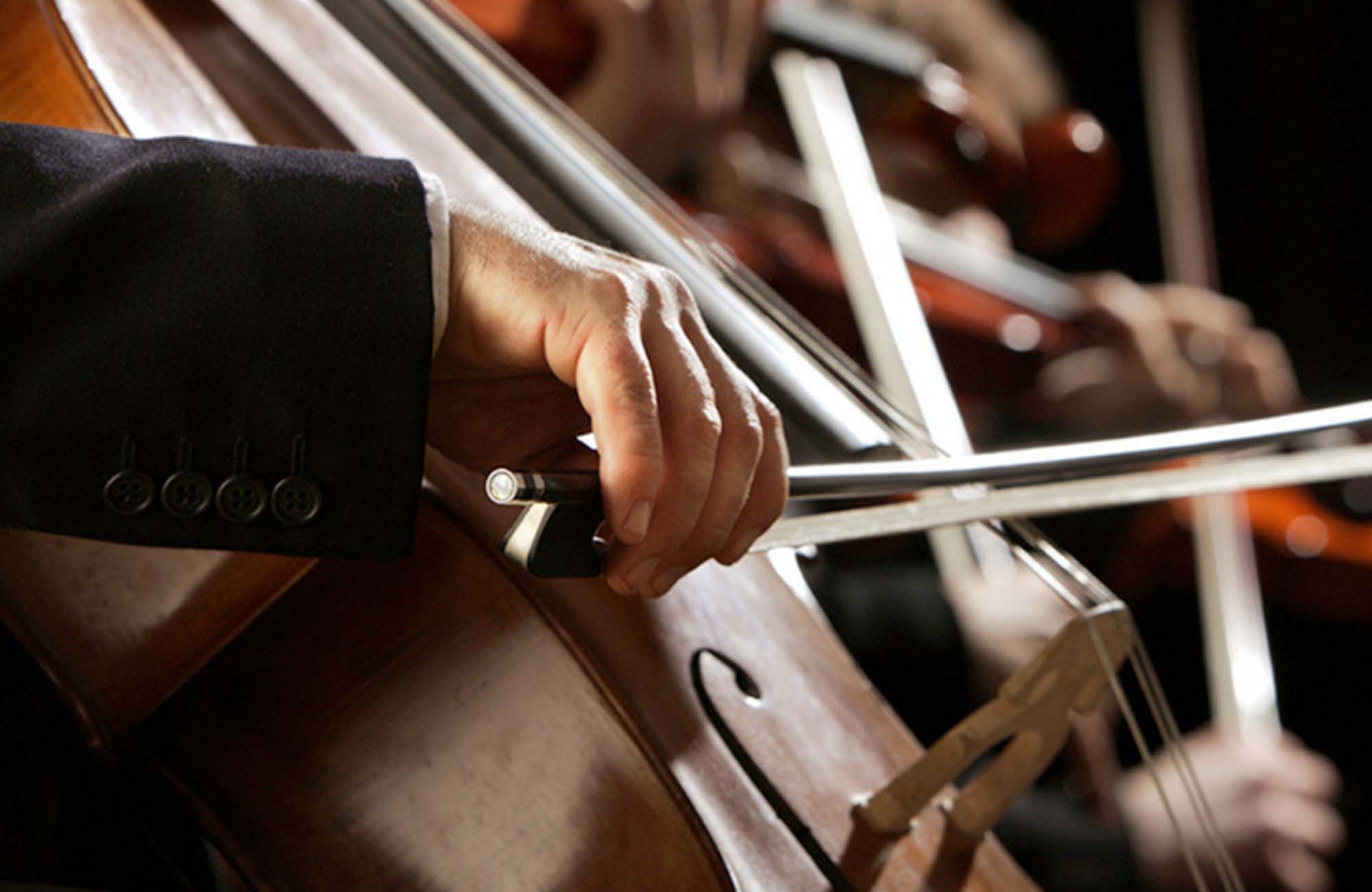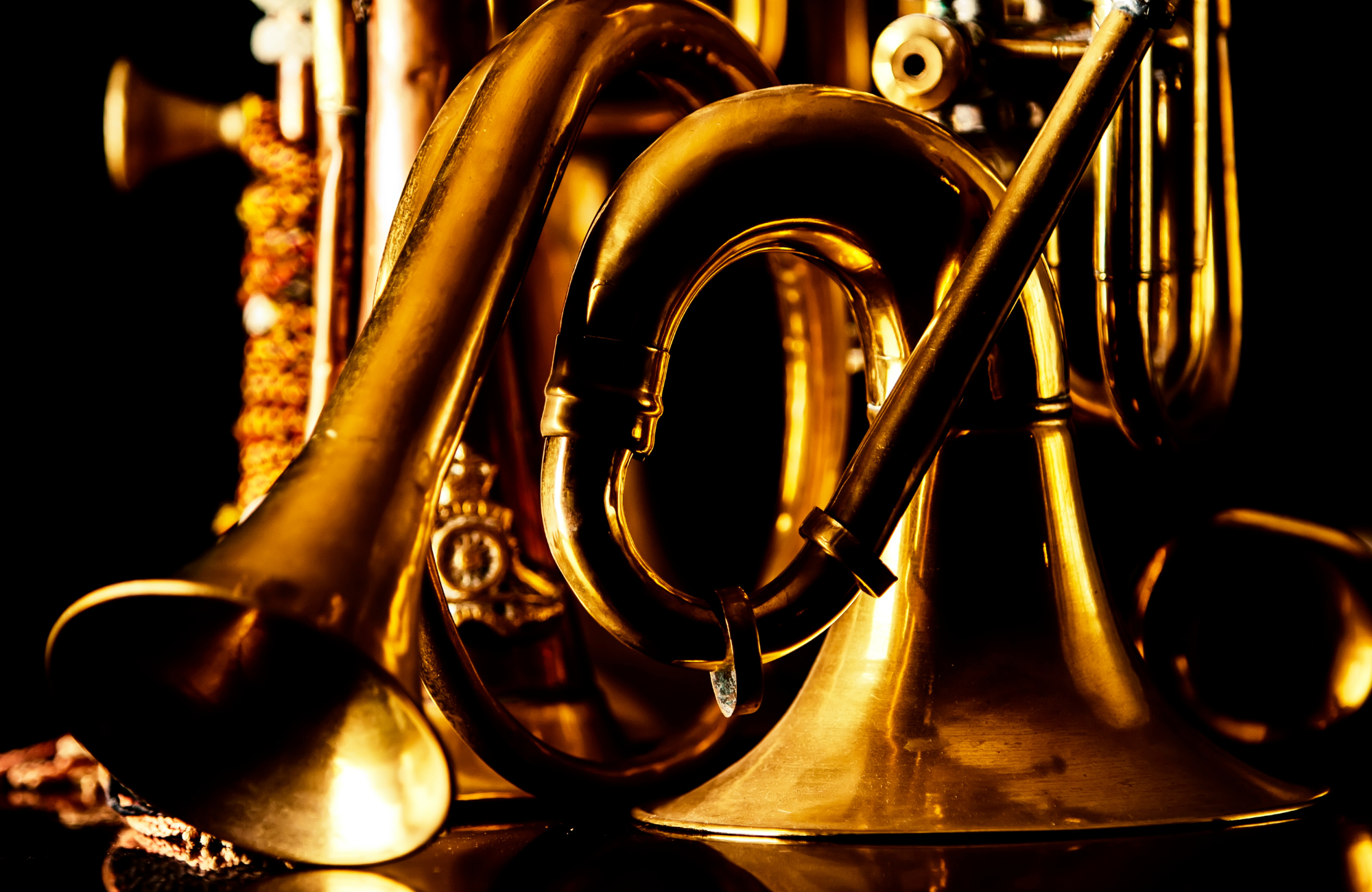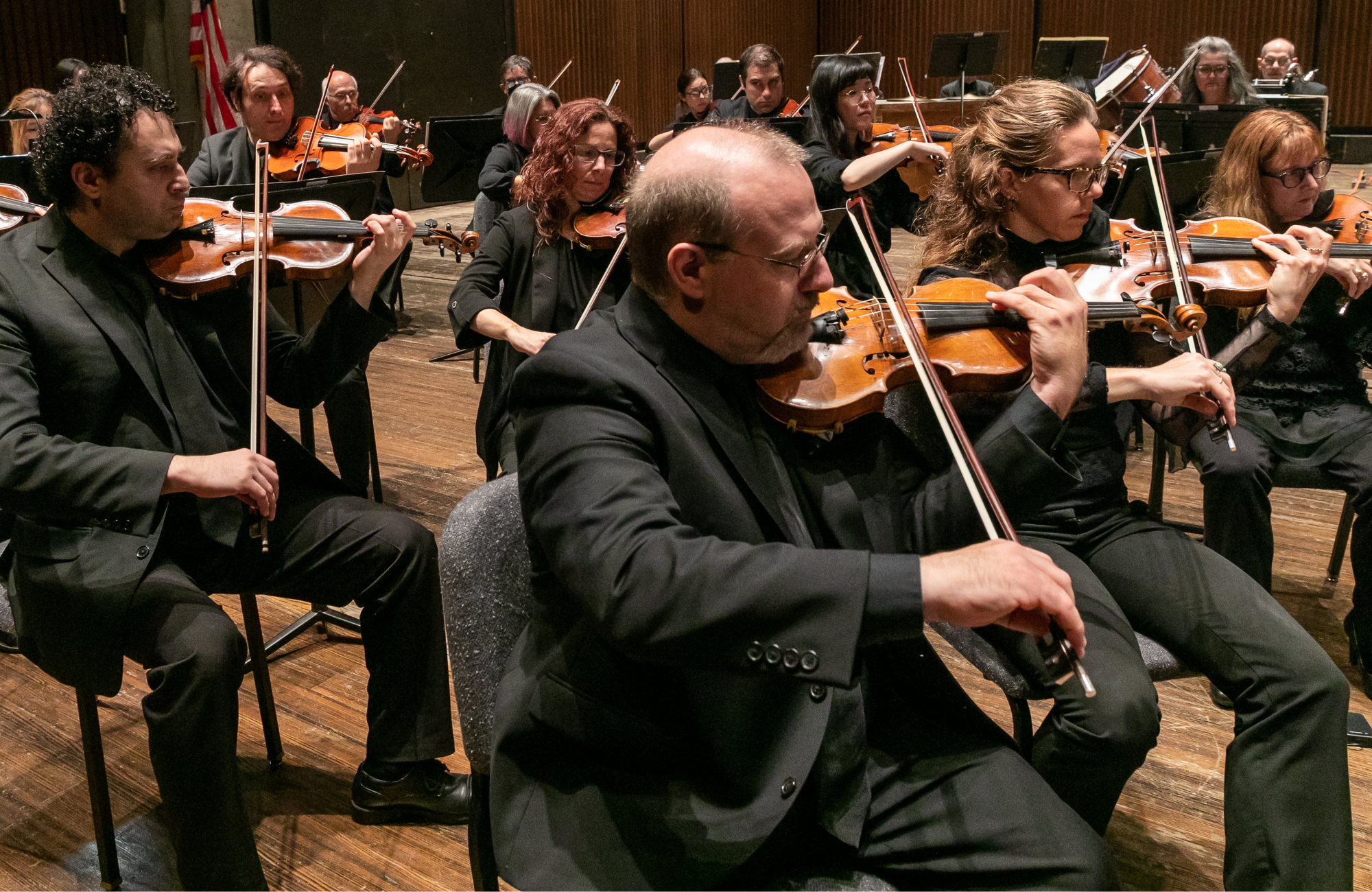Baroque music is generally recognized as music written between 1600 and 1750. Neo-Baroque is anything written after that time that looks back to the styles and forms of the Baroque period. This concert features two Baroque works: the Vivaldi Concerto for Two Trumpets, featuring Symphoria trumpet players John Raschella and Roy Smith, and the Overture to Cephale et Procris by Élisabeth Jacquet de La Guerre, possibly the first woman ever to have an opera performed in France! The remainder of the concert features works that look back to the Baroque but with their own sense of sound and style, including Holst’s Fugal Concerto featuring flutist Xue Su and oboist Anna Peterson.
PROGRAM
VIVALDI: Concerto, 2 Trumpets, RV 537, C major ![]()
PÄRT: Summa ![]()
HOLST: A Fugal Concerto, op.40, no.2 ![]()
JACQUET DE LA GUERRE: Overture to Cephale et Procris ![]()
GRIEG: Holberg Suite ![]()
PIAZZOLLA: Fuga y misterio ![]()
PROGRAM NOTES
One of Faulkner’s characters observed, “The past is never dead. It isn’t even past.” The perennial influence of baroque music illustrates his point. Whatever the stylistic revolutions that followed (classicism, romanticism, modernism), composers continued to turn to the baroque for grounding and inspiration. This concert, like several previous Casuals, celebrates that influence by intermingling baroque music with later works that flaunt their baroque inspiration.
We open with a baroque masterpiece, the Concerto in C for Two Trumpets (composition date unknown) by Antonio Vivaldi (1678–1741). Trumpet concertos are rare, double trumpet concertos doubly rare, so it’s ...
One of Faulkner’s characters observed, “The past is never dead. It isn’t even past.” The perennial influence of baroque music illustrates his point. Whatever the stylistic revolutions that followed (classicism, romanticism, modernism), composers continued to turn to the baroque for grounding and inspiration. This concert, like several previous Casuals, celebrates that influence by intermingling baroque music with later works that flaunt their baroque inspiration.
We open with a baroque masterpiece, the Concerto in C for Two Trumpets (composition date unknown) by Antonio Vivaldi (1678–1741). Trumpet concertos are rare, double trumpet concertos doubly rare, so it’s no surprise that this is an anomaly in Vivaldi’s vast output. Yet it shows his ingenuity as clearly as does the more familiar Four Seasons. Because trumpets at the time had no valves to change pitch, the available notes were limited—and even those few required tremendous virtuosity in lip control. As Symphoria’s second trumpet Roy Smith puts it, Vivaldi had access to “just the seven notes of the scale. There are no crazy intervals, there’s no multiple tonguing; it’s just scales and arpeggios. But it works!” Indeed, you hardly notice the limitations, given how imaginatively Vivaldi plays with what he has, reveling in the instruments’ virtues rather than their limitations. The opening of the finale, for instance, “shows off what a baroque trumpet sound should be, what the instrument is designed for.”
To add to the pleasures, says Roy, it’s “a team piece, a sharing concerto. Normally, my role in the classical repertoire is to fill out the sound underneath John Raschella, to play a lower octave to his higher pitch, to put down a harmony to his melody.” The Vivaldi features “a much more direct copying back and forth. There is a lot of imitation and a lot of sharing lines.” It’s especially gratifying to play with someone he knows well: “I can pretty much guess without hearing how John is going to play it, where he’s going to be tonguing and slurring, the quality of the articulation, the dynamic shaping—even though that’s not in the printed music. That’s something you develop a sixth sense for when you’ve sat next to someone for years.”
John is just as excited about the work, which he first performed, at Northminster Presbyterian Church, as an eighth grader (!) with Bill Coble, brother of former Syracuse Symphony trumpeter George Coble. “Bill (who was in seventh grade at the time) took one of George’s trumpet albums, listened to it, and actually wrote out both parts”—even transposing them—“because we didn’t know how to order sheet music at the time!” All in all, a splendid way to show off the kind of interaction among players that gives the orchestra its character—as well as to remind us of the orchestra’s deep connections to the Syracuse community.
Jumping ahead, we turn to the 1977 Summa by Arvo Pärt (b. 1935), whose Fratres was such a hit on a Casual last season. Pärt’s music is often experienced as timeless, for many reasons. Rhythmically, its steady tread (no dotted figures or sixteenth notes), coupled with its metrical fluidity and its lack of strong accents, provides a sense of barely changing calm. Stylistically, its ties to both the distant past (the Renaissance perhaps more than the baroque) and the present (minimalism) make it hard to place historically. Emotionally, despite the complex structural system generating it, it has a meditative simplicity that transports you from the here and now. Summa was originally written as a choral Credo, but since Pärt is more concerned with the music’s spiritual quality than its material sound, he later recast for many other ensembles.
It’s hard to think of a greater contrast to Summa than the brief Fugal Concerto composed in 1922 by Gustav Holst (1874–1934). Where Pärt is inward, Holst is outgoing; where Pärt is otherworldly, Holst is earthy (he even brings the nursery tune “If All the World Were Paper” into the last movement); where Pärt is unconcerned with sonority, Holst appreciates the play of instrumental colors as the oboe and flute play off against each other. If you know Holst only from his modernist and large-scaled The Planets, you may be delightfully surprised by the modesty of this backward-looking morsel.
The first half of the concert ends with a return to the baroque, the 1694 overture to Céphale et Procris by Élisabeth Jacquet de La Guerre (1665–1729). The opera, possibly the first by a woman to have been produced in France, is a darkly tangled, Ovid-inspired tale of passion, misunderstanding, and betrayal. Little of its heartbreak comes through in the overture, however, which is largely a bright, up-tempo affair, with delicious interplay among the musical lines.
Edvard Grieg (1843-1907) might not seem to fit into this afternoon’s program, since he was an arch-romantic more likely to look to folklore than to the musical past for inspiration. But his Holberg Suite, composed in 1884 to commemorate the 200th anniversary of playwright Ludvig Holberg, uncharacteristically exploits 18th-century French dance templates of the sort that Jacquet de la Guerre used in her harpsichord suites. Originally for piano, it is best known in Grieg’s 1885 arrangement for strings. Conductor Larry Loh has a deep affection for the piece. It was one of the first neo-baroque works he encountered as a youngster, and it played off well against the baroque music he devoured as a beginning pianist.
Like many neo-baroque works, the Holberg Suite has an intoxicating double vision, as archaic conventions are reimagined in romantic garb, with a strong folk influence, although it’s heard in Grieg’s general inflections rather than in actual quotation. The suite was written in the wake of his reconciliation with his wife after a strained period—which may help explain the overall sunniness of the music and what Larry calls the “most beautiful harmonic and melodic moments” of the Bach-infused Air (his favorite movement). Grieg himself belittled the work as a “perruque” (powdered wig) piece, but he surely underestimated it, and it has become one of his most popular.
One baroque technique that Grieg does not employ is the fugue—so to compensate, as a kind of programmed encore, we offer the Fuga y misterio by Astor Piazzolla (1921–1992), whose music (including his popular Four Seasons of Buenos Aires) often merges the tango with the baroque. Originally from the expressionistic 1968 opera Maria de Buenos Aires, Fuga y misteria has taken on a life of its own, in a variety of arrangements. It reveals two sides of Piazzolla’s musical character: the conflicting syncopations provide high energy for the zippy Fugue; the Misterio reveals his nostalgic, even sentimental side.
Peter J. Rabinowitz
Have comments or questions? Contact me at prabinowitz@ExperienceSymphoria.org
FEATURED ARTISTS
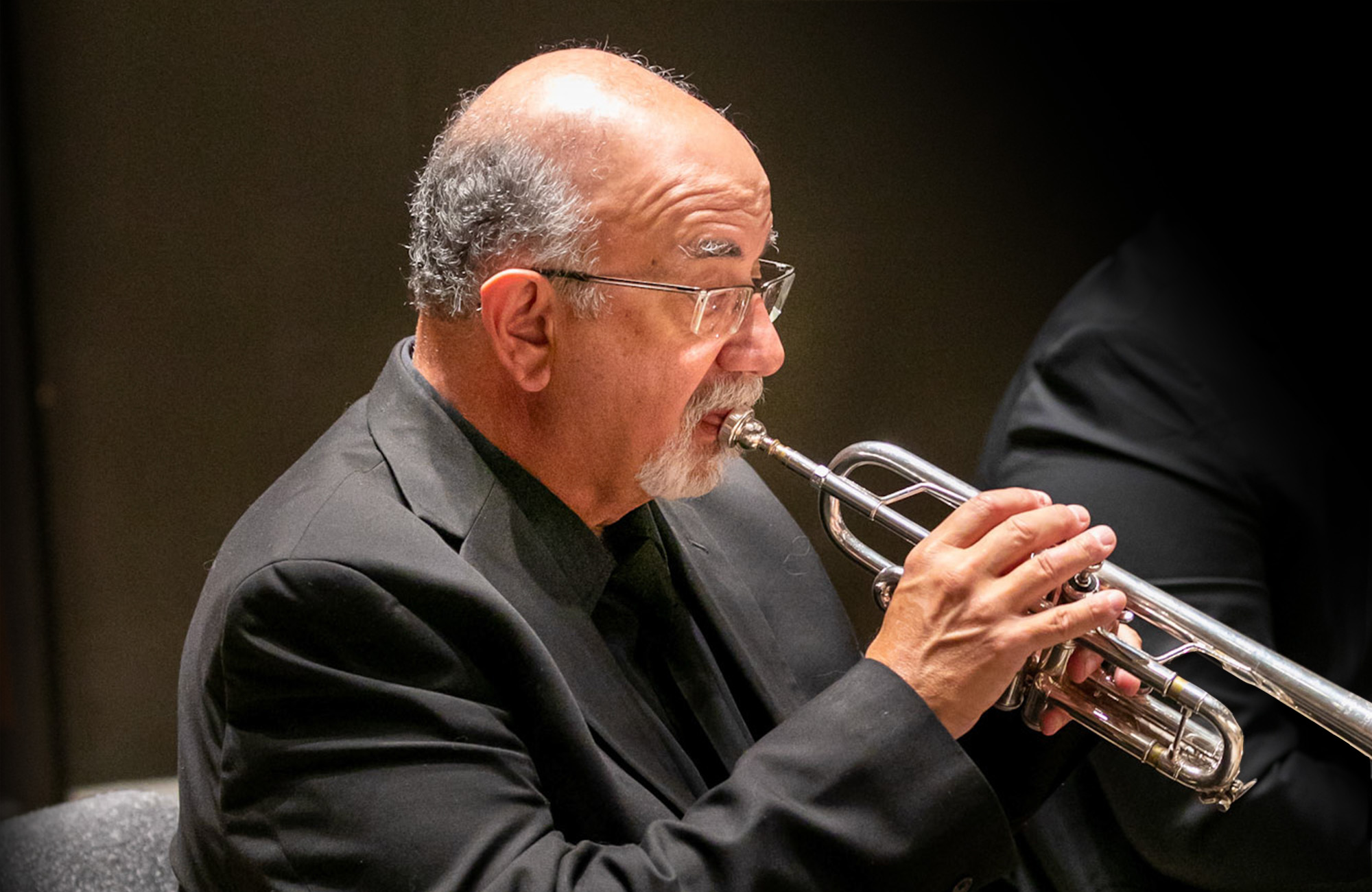
John Raschella is currently Principal Trumpet with Symphoria. Prior to that for 30 years he was Principal Trumpet and Associate Principal trumpet of the Syracuse Symphony Orchestra. He has performed as Co Principal trumpet with the Pittsburgh Symphony and has performed with the Philadelphia Orchestra along with the symphony orchestras ...
John Raschella is currently Principal Trumpet with Symphoria. Prior to that for 30 years he was Principal Trumpet and Associate Principal trumpet of the Syracuse Symphony Orchestra. He has performed as Co Principal trumpet with the Pittsburgh Symphony and has performed with the Philadelphia Orchestra along with the symphony orchestras of Houston, Minnesota, Buffalo, Rochester and Jacksonville. He has also been a featured performer at the International Trumpet Guild Conference and has recorded with the Pittsburgh and Syracuse Symphony Orchestras. In the summers he has performed as principal trumpet of the Eastern Music Festival in N Carolina and the Spoleto festival in Italy as well as a frequent performer at the Skaneateles festival.
Mr. Raschella attended the Manhattan School of Music and the Curtis Institute of Music where he received an artist diploma. Mr. Raschella has taught at Ithaca College and is on the faculties of Hamilton College and Syracuse University. He has given master classes at The Curtis Institute, Ithaca College and Nazareth College.
Mr. Raschella is a native of Syracuse having grown up in Dewitt and remembers his first musical experience as going to a young persons concert at the war memorial and hearing the Syracuse Symphony at the age of 9. It changed his life and turned him on to classical music! His children are also musicians with daughter Mary (violin) a string teacher in the Williamsville school district and son David (french horn) who is attending the Juilliard school.
When not playing the trumpet you will find he and his wife Bonnie aboard their boat “BonGiovanni” where they love to cruise the Erie Canal and the great lakes!
Roy Smith, second trumpet, attended Northwestern University and Roberts Wesleyan College. Smith has performed with many groups including Rochester and Buffalo Philharmonics Orchestras, Greensboro Symphony, Winston Salem Symphony, Roanoke Symphony, and New World Symphony. He currently serves as Adjunct Lecturer of Trumpet at the Fredonia School of Music and ...
Roy Smith, second trumpet, attended Northwestern University and Roberts Wesleyan College. Smith has performed with many groups including Rochester and Buffalo Philharmonics Orchestras, Greensboro Symphony, Winston Salem Symphony, Roanoke Symphony, and New World Symphony. He currently serves as Adjunct Lecturer of Trumpet at the Fredonia School of Music and has also taught at Houghton College, the Hochstein School of Music and Dance, Lima Christian School, and the Csehy Summer School of Music. He lives in Rochester, NY with his wife Julie and their three children.
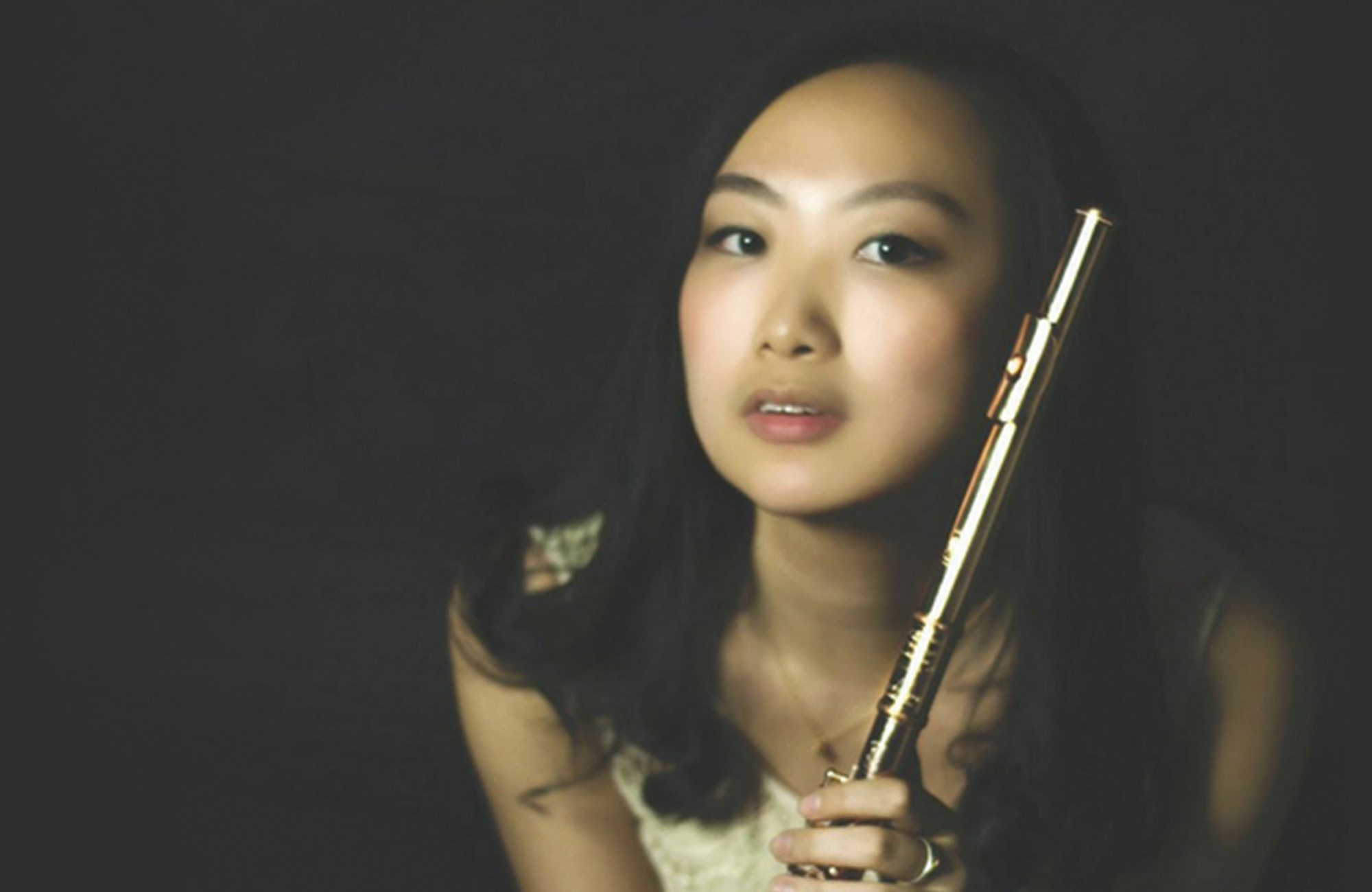
Xue Su is the principal flute of Symphoria (formerly the Syracuse Symphony Orchestra.) Currently residing in New York City, she is dedicated to a career in orchestral performance and music education. Ms. Su performs regularly with the New York Philharmonic, and is a member of Symphony in C. She ...
Xue Su is the principal flute of Symphoria (formerly the Syracuse Symphony Orchestra.) Currently residing in New York City, she is dedicated to a career in orchestral performance and music education. Ms. Su performs regularly with the New York Philharmonic, and is a member of Symphony in C. She recently performed with the New York Philharmonic at the 2018 Asia Tour, 2018 & 2017 Bravo! Vail and Shanghai residencies. She has performed as guest principal flute with orchestra include the New Haven Symphony Orchestra, Princeton Symphony Orchestra and Albany Symphony. Ms. Su has taught as a guest teacher at the Manhattan School of Music’s Orchestral Performance program, as well as the Juilliard School Pre-College.
During the 2018-19 season, Ms. Su makes her Symphoria solo debut with Music Director Lawrence Loh, performing Lowell Liebermann’s virtuosic Flute Concerto. She was featured in Telemann’s A Minor Suite for Flute and Strings with the Syracuse Friends of Chamber Music Ensemble. Her previous solo engagements include performances with Cincinnati Philharmonia Orchestra on Bernstein’s Halil, Mozart’s Concerto in C Major for Flute and Harp, and Brandenburg Concerto No. 2.
Her brilliant musicianship has been recognized by numerous international competitions. In 2013, Ms. Su performed for a 1,500 audience at the Music for All summer symposium as a winner of the Yamaha Young Performing Artist Competition. She was a second prize winner at the National Flute Association’s Young Artist Competition, where she also received the award for best performance of the newly commissioned piece. Her other prize winning competitions include the Maxence Larrieu High School Soloist, Biwako, and Unisa International Flute Competitions.
Ms. Su began playing the flute at age 6. During her childhood music education, she attended the Elementary and Middle Schools of Central Conservatory in Beijing, China. She holds a Master of Music degree in Orchestral Performance from the Manhattan School of Music, where she was a full scholarship recipient. She is an alumna of Cincinnati College-Conservatory of Music and the Juilliard Pre-College.
Ms. Su is greatly indebted to her teachers Robert Langevin, Bradley Garner and Guoliang Han.
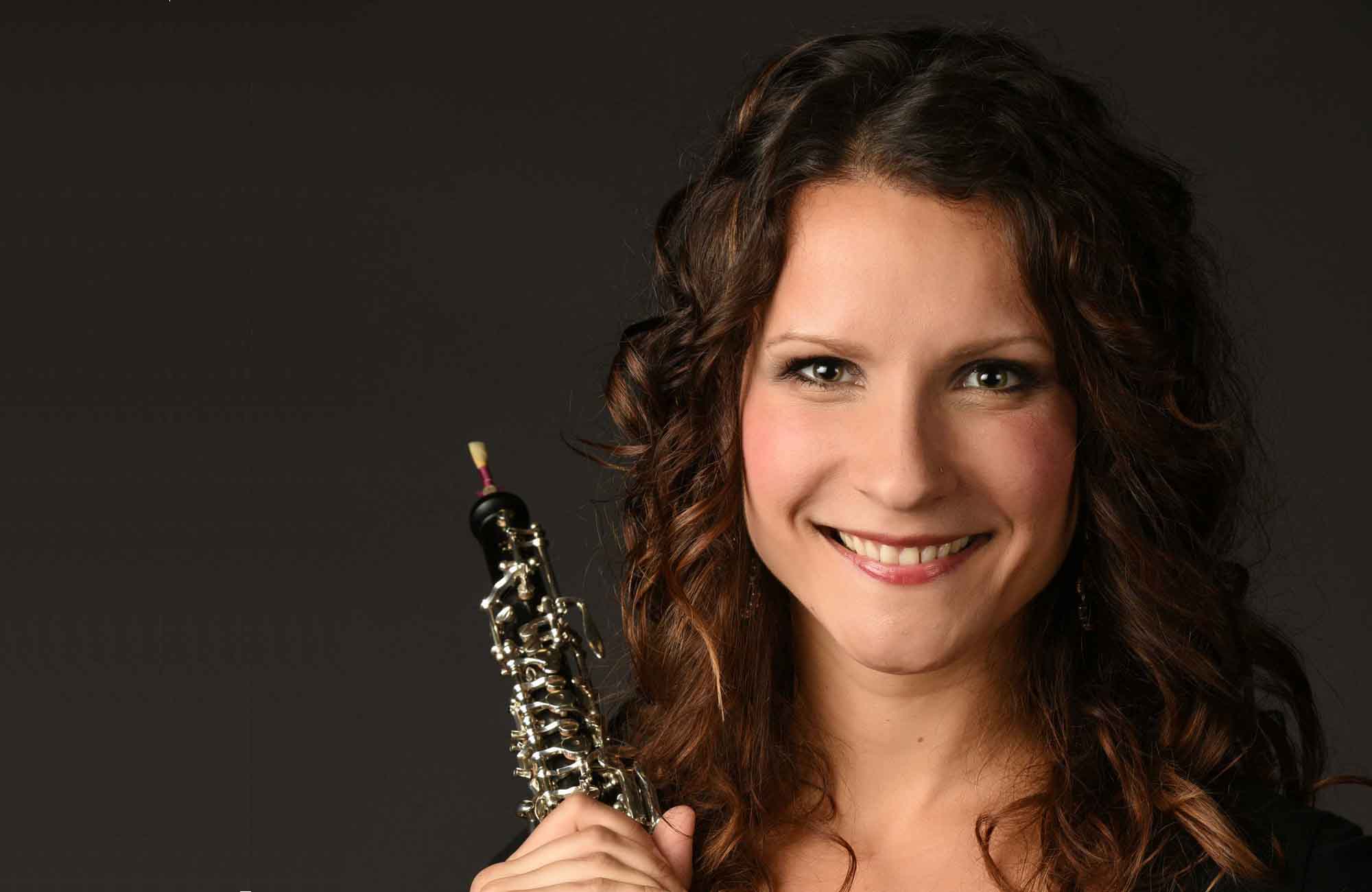
Anna Petersen joined Canada’s National Arts Centre Orchestra (NACO) as Second Oboe and English horn in 2013. As a member of NACO, she has performed orchestral and chamber concerts nationally throughout Canada and internationally in China, Hong Kong, and the U.K..
Prior to joining NACO, she ...
Anna Petersen joined Canada’s National Arts Centre Orchestra (NACO) as Second Oboe and English horn in 2013. As a member of NACO, she has performed orchestral and chamber concerts nationally throughout Canada and internationally in China, Hong Kong, and the U.K..
Prior to joining NACO, she held positions as Principal Oboe of the Syracuse Symphony Orchestra from 2009-2013 and as B-contract Second Oboe of the Rochester Philharmonic Orchestra from 2006-2009. She has enjoyed guest appearances as Principal Oboe with the Pittsburgh and Detroit Symphony Orchestras, The Florida Orchestra, the Lake Placid Sinfonietta, and the Buffalo Philharmonic Orchestra, with whom she made her Carnegie Hall debut in 2013.
In addition to her orchestral career, Anna is an active soloist and chamber musician. She has been a soloist with the Syracuse Symphony Orchestra, Symphoria, the Milwaukee Symphony Orchestra, the Lake Placid Sinfonietta, and the Milwaukee Youth Symphony Orchestra, and has performed as a finalist in the 2006 and 2007 Coleman Chamber Music Competitions in Pasadena, California. Anna has been a fellow at the Norfolk Chamber Music Festival, a participant at the Masterclass Program at the Banff Centre for the Arts, and a performer at the Skaneateles and Bravo! Vail Valley Music festivals.
Also an experienced teacher, Anna was the Adjunct Professor of Oboe at Syracuse University’s Setnor School of Music from 2010-2012 and was previously on the faculty at SUNY Geneseo from 2007-2009. During the summers of 2012 and 2015, she was a coach at the Bennington Chamber Music Conference in Bennington, Vermont.
Anna earned her Bachelor of Music Degree and Performer’s Certificate from the Eastman School of Music. Her primary teachers include Richard Killmer and Suzanne Geoffrey.
In addition to her musical life, Anna is also an internationally certified RYT-200 Registered Yoga Teacher with Yoga Alliance, having completed her 200-hour teacher training in Bali, Indonesia in 2017.

Described as bringing an “artisan storyteller’s sensitivity… shaping passages with clarity and power via beautifully sculpted dynamics… revealing orchestral character not seen or heard before” (Arts Knoxville) Lawrence Loh enjoys a dynamic career as a conductor of orchestras all over the world.
After an extensive two ...
Described as bringing an “artisan storyteller’s sensitivity… shaping passages with clarity and power via beautifully sculpted dynamics… revealing orchestral character not seen or heard before” (Arts Knoxville) Lawrence Loh enjoys a dynamic career as a conductor of orchestras all over the world.
After an extensive two year search, Lawrence Loh was recently named Music Director of the Waco Symphony Orchestra beginning in the Spring of 2024. Since 2015, he has served as Music Director of The Syracuse Orchestra (formerly called Symphoria), the successor to the Syracuse Symphony Orchestra. “The connection between the organization and its audience is one of the qualities that’s come to define Syracuse’s symphony as it wraps up its 10th season, a milestone that might have seemed impossible at the beginning,” (Syracuse.com) The Syracuse Orchestra and Lawrence Loh show that it is possible to create a “new, more sustainable artistic institution from the ground up.”
Appointed Assistant Conductor of the Pittsburgh Symphony in 2005, Mr Loh was quickly promoted to Associate and Resident Conductor within the first three years of working with the PSO. Always a favorite among Pittsburgh audiences, Loh returns frequently to his adopted city to conduct the PSO in a variety of concerts. Mr. Loh previously served as Music Director of the West Virginia Symphony Orchestra, Music Director of the Northeastern Pennsylvania Philharmonic, Artistic Director and Principal Conductor of the Syracuse Opera, Music Director of the Pittsburgh Youth Symphony Orchestra, Associate Conductor of the Dallas Symphony Orchestra, Associate Conductor of the Colorado Symphony Orchestra and Music Director of the Denver Young Artists Orchestra.
Mr. Loh’s recent guest conducting engagements include the San Francisco Symphony, Dallas Symphony, North Carolina Symphony, Baltimore Symphony, Sarasota Orchestra, Florida Orchestra, Pensacola Symphony, Atlanta Symphony, National Symphony, Detroit Symphony, San Diego Symphony, Seattle Symphony, National Symphony (D.C.), Utah Symphony, Rochester Philharmonic, Indianapolis Symphony, Calgary Philharmonic, Buffalo Philharmonic, Albany Symphony and the Cathedral Choral Society at the Washington National Cathedral. His summer appearances include the festivals of Grant Park, Boston University Tanglewood Institute, Tanglewood with the Boston Pops, Chautauqua, Sun Valley, Shippensburg, Bravo Vail Valley, the Kinhaven Music School and the Performing Arts Institute (PA).
As a self-described “Star Wars geek” and film music enthusiast, Loh has conducted numerous sold-out John Williams and film music tribute concerts. Part of his appeal is his ability to serve as both host and conductor. “It is his enthusiasm for Williams’ music and the films for which it was written that is Loh’s great strength in this program. A fan’s enthusiasm drives his performances in broad strokes and details and fills his speaking to the audience with irresistible appeal. He used no cue cards. One felt he could speak at filibuster length on Williams’ music.” (Pittsburgh Tribune)
Mr Loh has assisted John Williams on multiple occasions and has worked with a wide range of pops artists from Chris Botti and Ann Hampton Callaway to Jason Alexander and Idina Menzel. As one of the most requested conductors for conducting Films in Concert, Loh has led Black Panther, Star Wars (Episodes 4-6), Jaws, Nightmare Before Christmas, Jurassic Park, Casablanca, The Wizard of Oz and Singin’ in the Rain, among other film productions.
Lawrence Loh received his Artist Diploma in Orchestral Conducting from Yale, his Masters in Choral Conducting from Indiana University and his Bachelor of Arts from the University of Rochester. Lawrence Loh was born in southern California of Korean parentage and raised in Carlisle, Pennsylvania. He and his wife Jennifer have a son, Charlie, and a daughter, Hilary. Follow him on instagram @conductorlarryloh or Facebook at @lawrencelohconductor or visit his website, www.lawrenceloh.com


